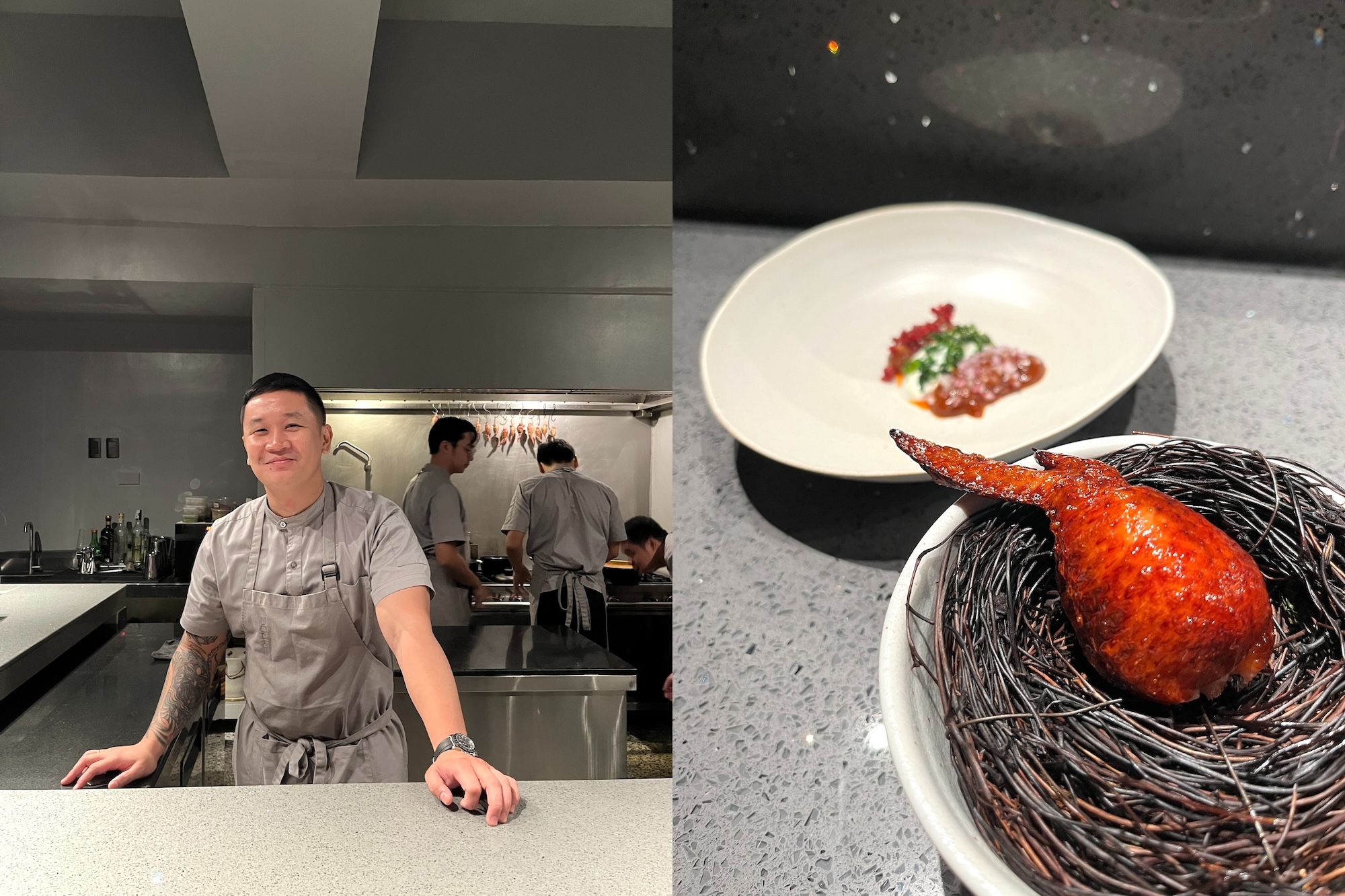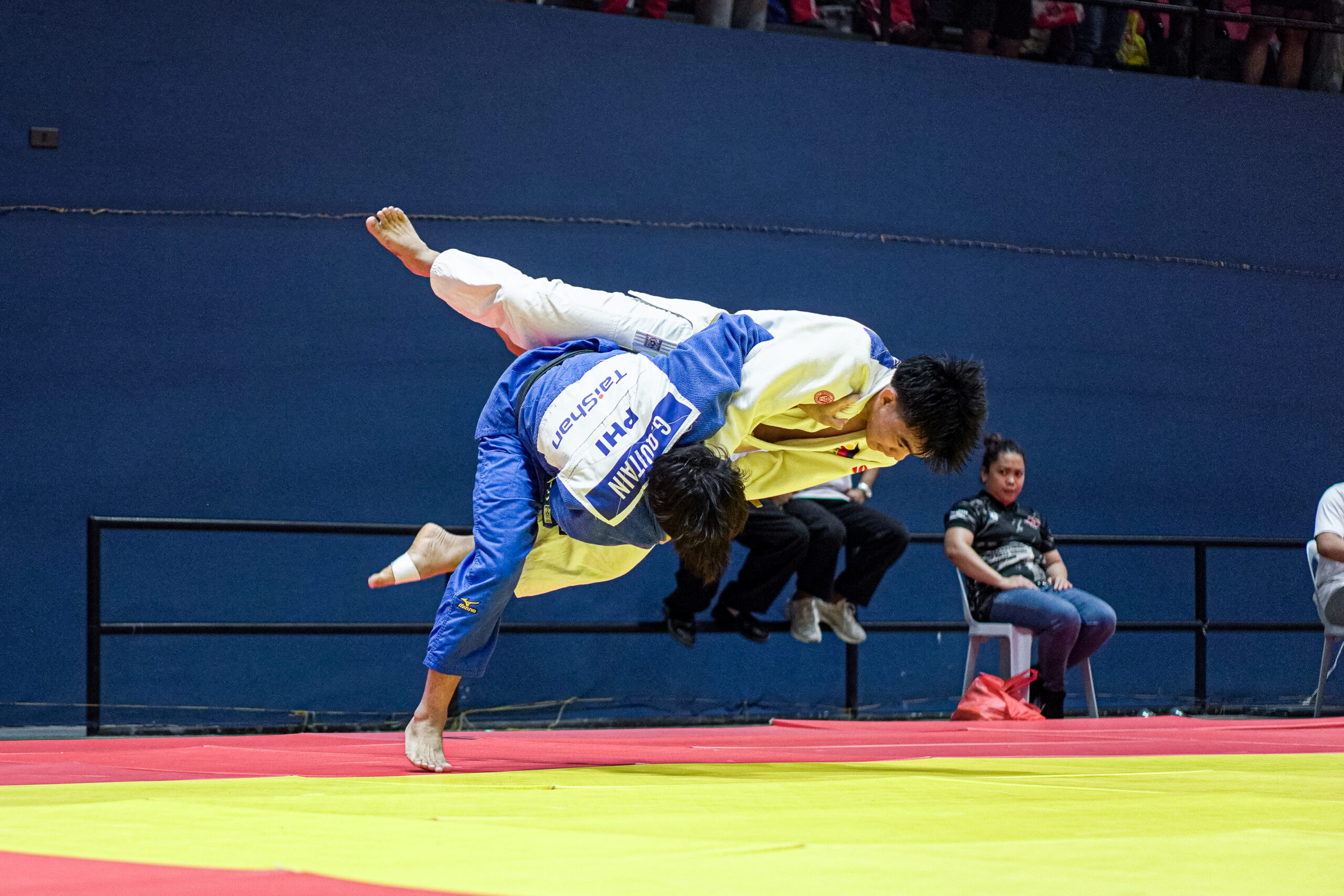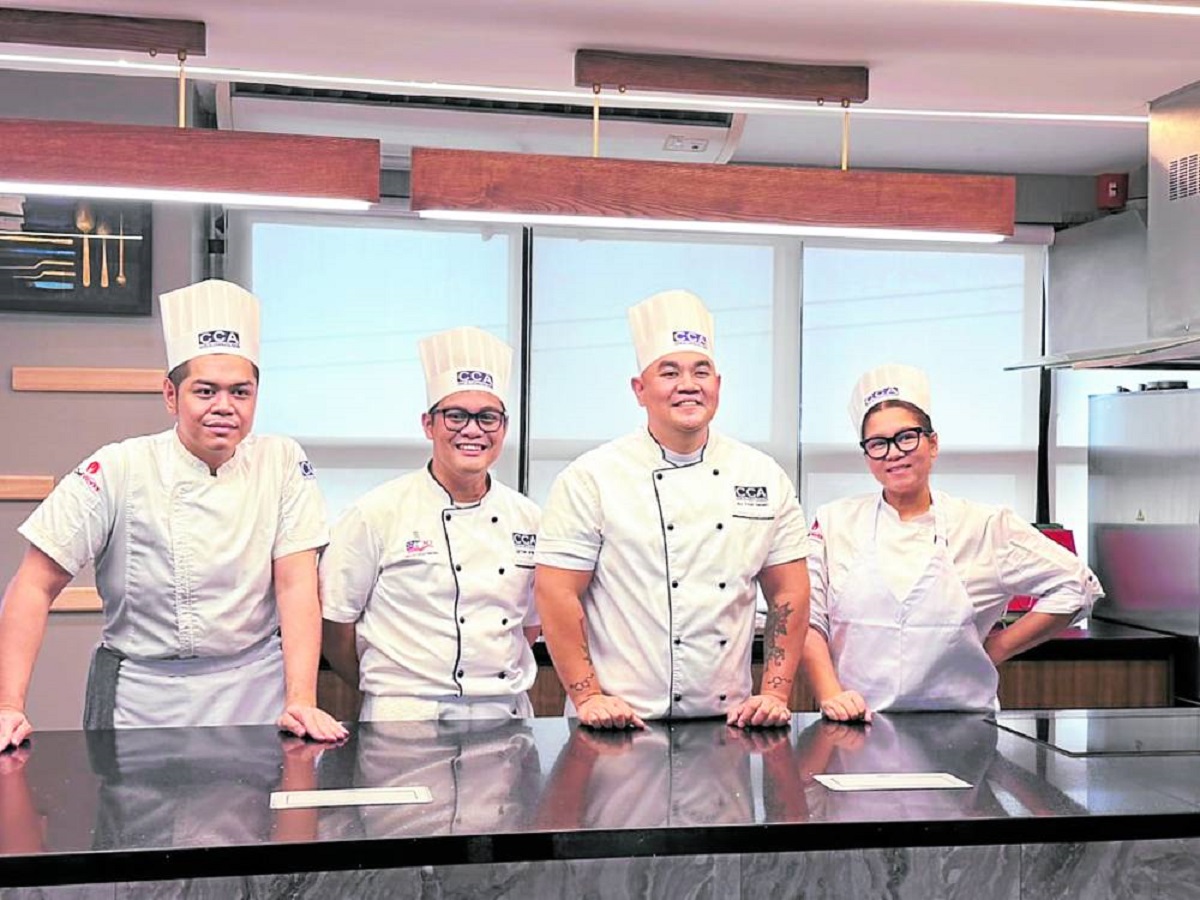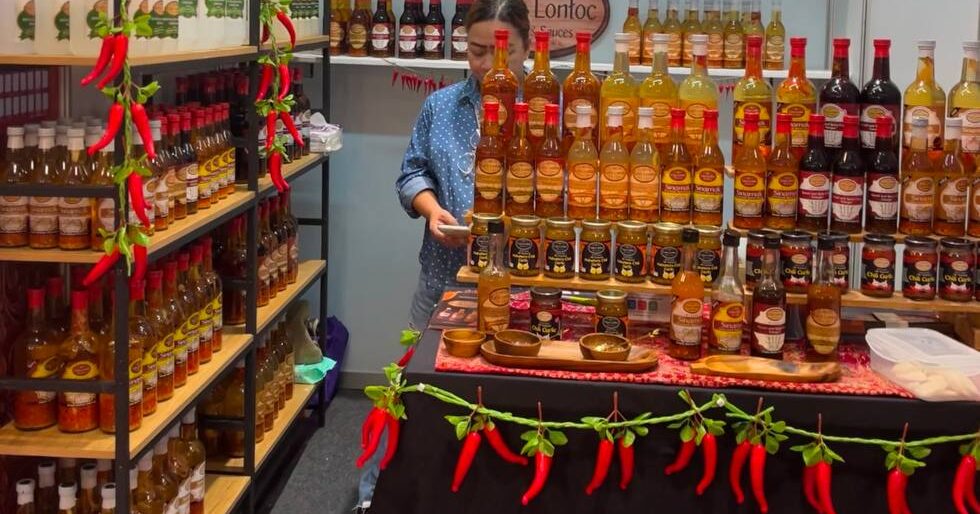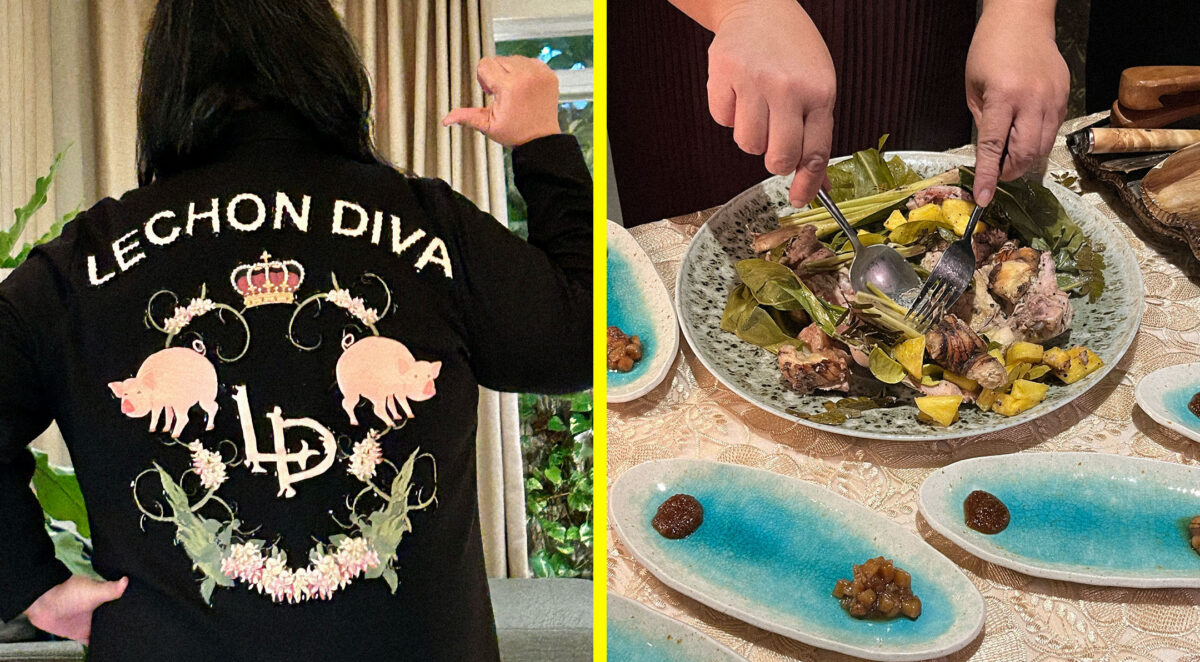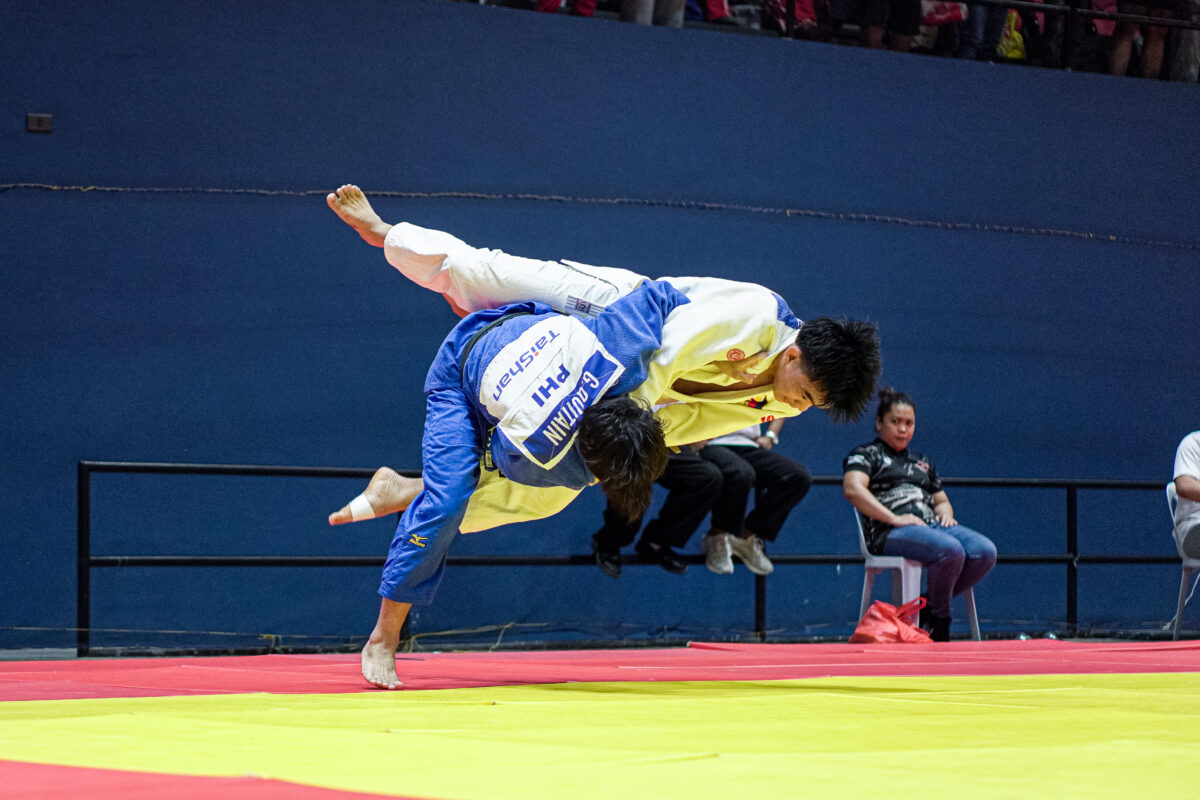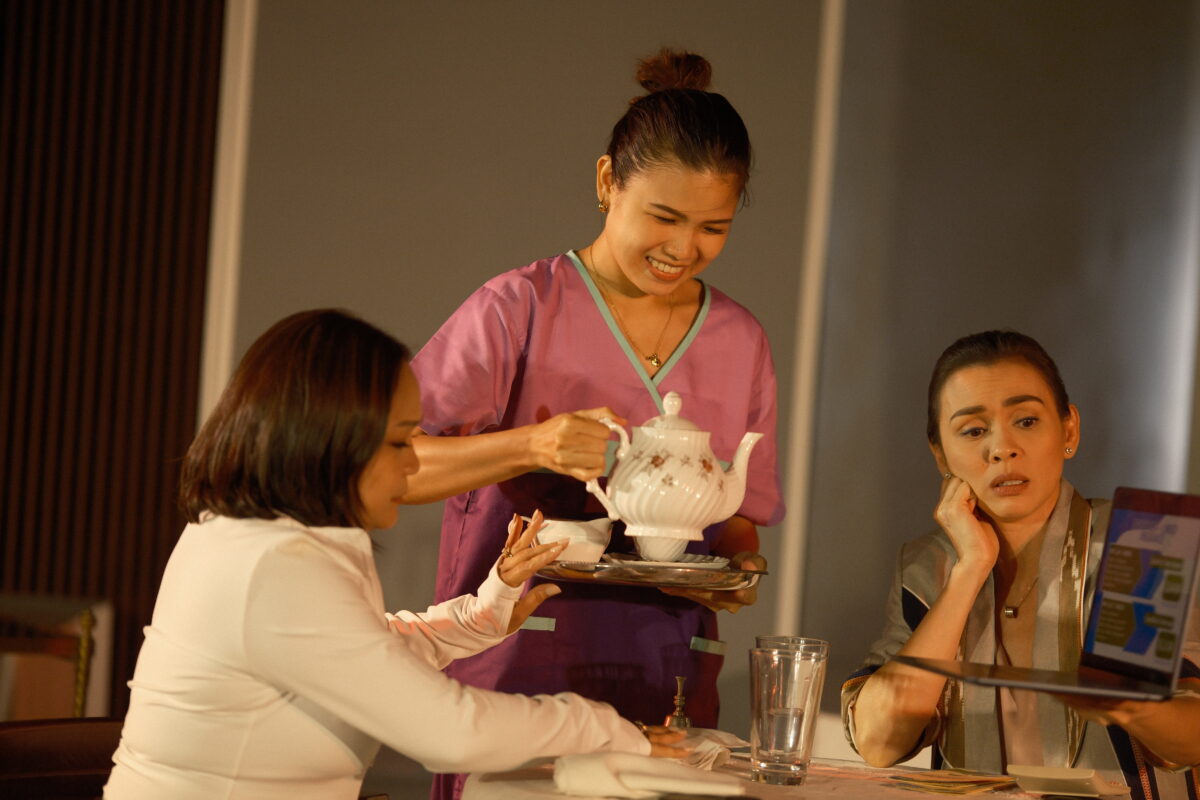Any trip to Mōdan’s revitalized Asian adventure is too short but it’s nevertheless sweet and intense with Jorge Mendez leading the way
Jorge Mendez is in a mood to travel again.
Launched just a couple weeks ago, Mōdan’s Asian Leg 2.0 menu, which is the fourth rollout from his progressive Japanese omakase-style restaurant, confirms his status as that storytelling chef who really likes to explore and share pieces of himself.
When Mendez and his well-spoken sous chefs Aaron Ramirez and Ryuhiko Yato (let’s not forget to mention this likable guy’s single, sullen wavy fringe and Alden Richardsesque charm) said we won’t get a menu at the start of the service, I knew we’d be in for an intriguing ride.
“That’s because we want this experience a little bit more imaginative, kind of like a traveler traveling without a map and we will be your guide for tonight,” says Ramirez.
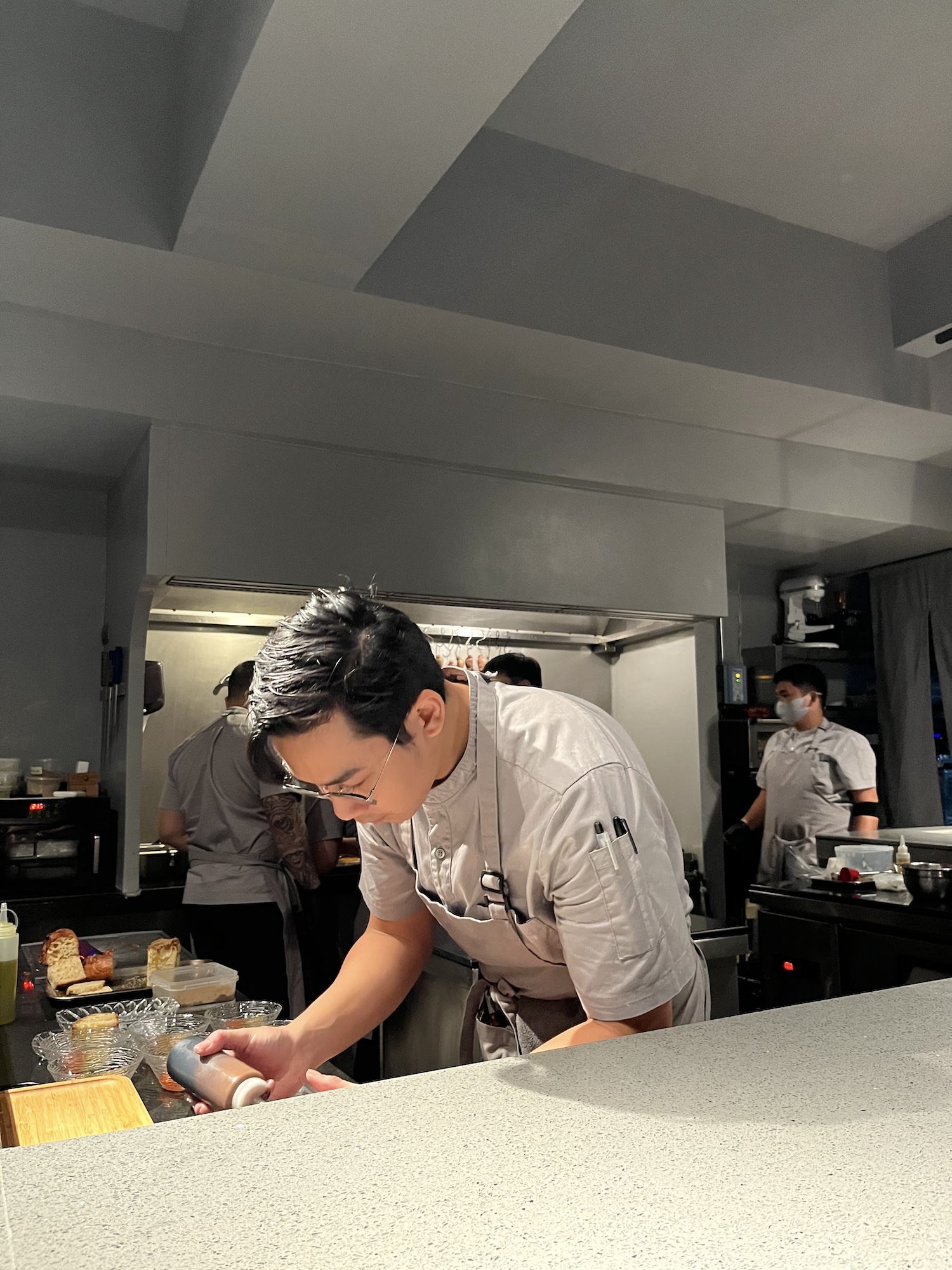
And it certainly was to say the least.
Back in the driver’s seat alongside his 14-strong team, Mendez steers guests from the confines of Mōdan’s intimate space to the forests and seas of the Philippines and then out into Mainland Southeast Asia and up towards East Asia.
An interesting philosophy surrounding Mendez’s methods is the fact that sometimes he doesn’t like certain ingredients but submits to their necessity of use—he’s just like you and me, really. “Like, I don’t want coconut in my food but since it’s ‘Malaysia’ I have to use it,” he explains matter-of-factly. It can be a technical challenge, yes, but he goes down that rabbit hole anyway and eventually finds some enchanting results.
Back in the driver’s seat alongside his 14-strong team, Jorge Mendez steers guests from the confines of Mōdan’s intimate space to the forests and seas of the Philippines and then out into Mainland Southeast Asia and up towards East Asia.
That coconut dish he was referring to is one of them: a blissful bite of miso coconut-marinated halibut sitting on a salad of water chestnuts and nutty farro, then coupled with a light rendang foam on one side and katsuoboshi milk with pandan oil on the other.
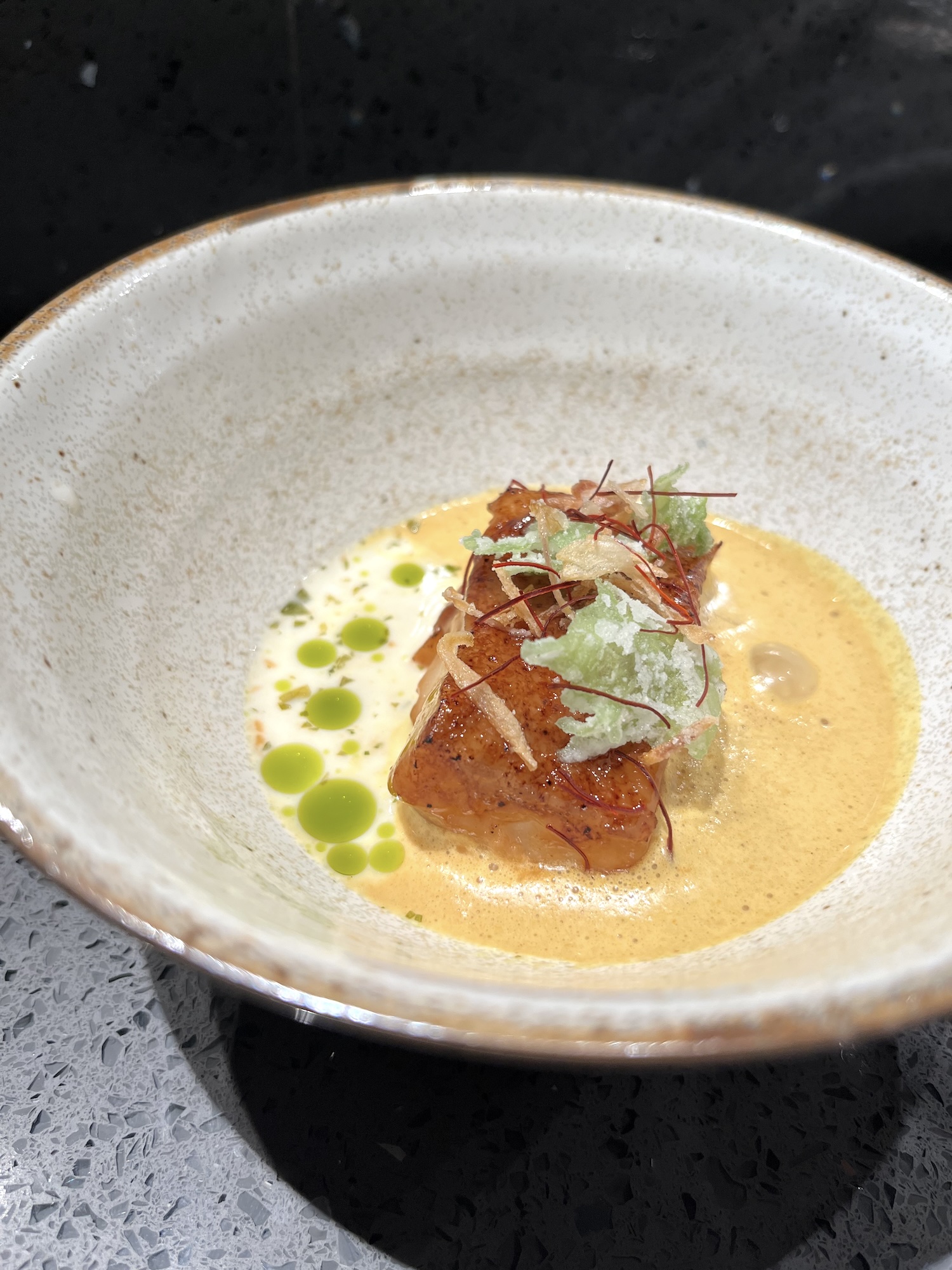
It’s the kind of dish that makes you wonder: If Mendez uses ingredients he’s not particularly fond of but ends up creating a fish rendang like a shining beacon in the dark then maybe he doesn’t really mean more than he lets on when he cracked that statement. Or he could just be humbly downplaying what he’s capable of—though we all know that—because this is a heady rendang with considerably quality flavors.
Mendez opens the eight-course tasting menu with an assortment of flavorful affairs. First up from Nueva Vizcaya is a sinanglaw sipped like coffee that harks back to Mendez’s childhood. It’s laden with seafood and kamias bits at the bottom and layered with mayu (garlic oil) and a frothy foamy top that mimics the aforementioned liquid breakfast.
A trio of snacks follows soon after that represents the Earth’s habitats, each generously bringing a characteristic nuance to the lineup like essential Lego bricks.
A trio of snacks follows soon after that represents the Earth’s habitats, each generously bringing a characteristic nuance to the lineup like essential Lego bricks: a mushroom foie gras “Forest” slightly sweetened with fermented kuromitsu (sugar syrup); a fresh “Land” wheat cracker souffle filled with beef gyoza tartare and piled on with black vinegar gel and wasabi cream you can delicately finish in a bite or two; and a seriously good brown butter-cured and binchotan-grilled scallops floating gently on a deep hibiscus tosa sauce and topped with edible flowers.
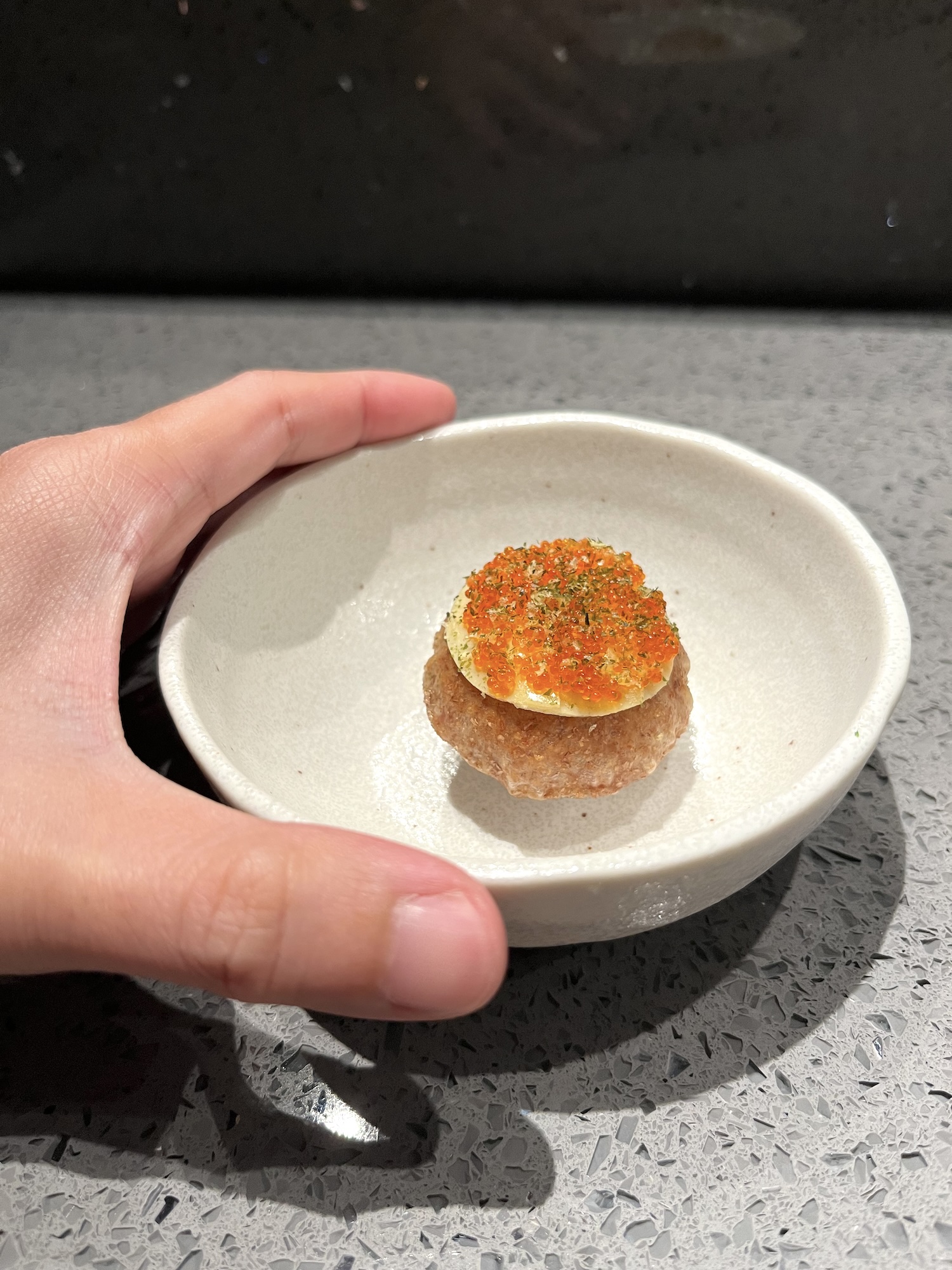
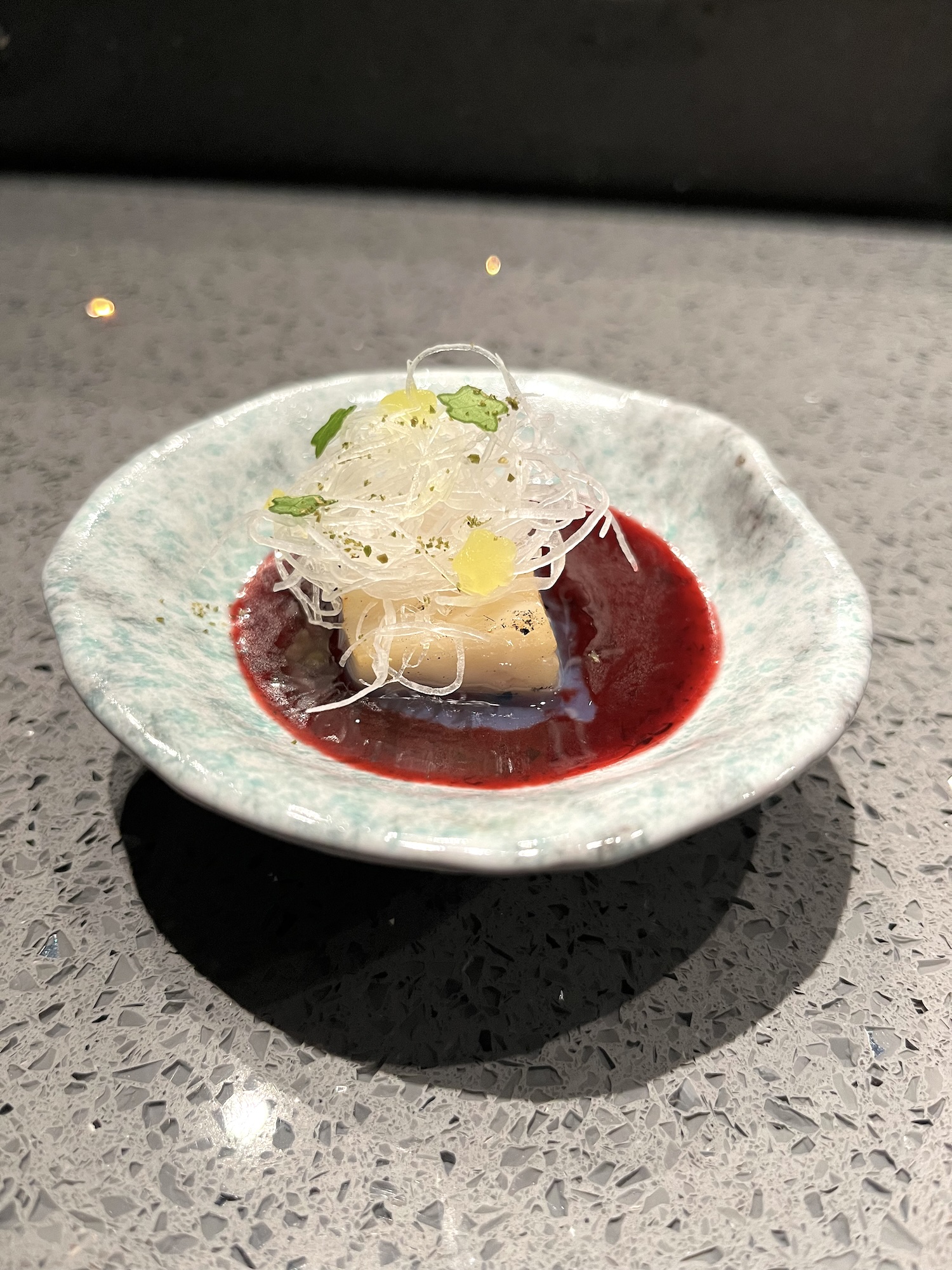
But the belle of the Asian ball is “Bhutan” that comes in a familiar tebasaki template. The glassy chicken wing stuffed with biryani shari rice is frankly delicious on its own but smear it onto the three-tiered sauce (umi paste with cranberries, yogurt with cilantro, butter chicken sauce with shallots) and it transforms into a flavor-fueled matsuri in your mouth.
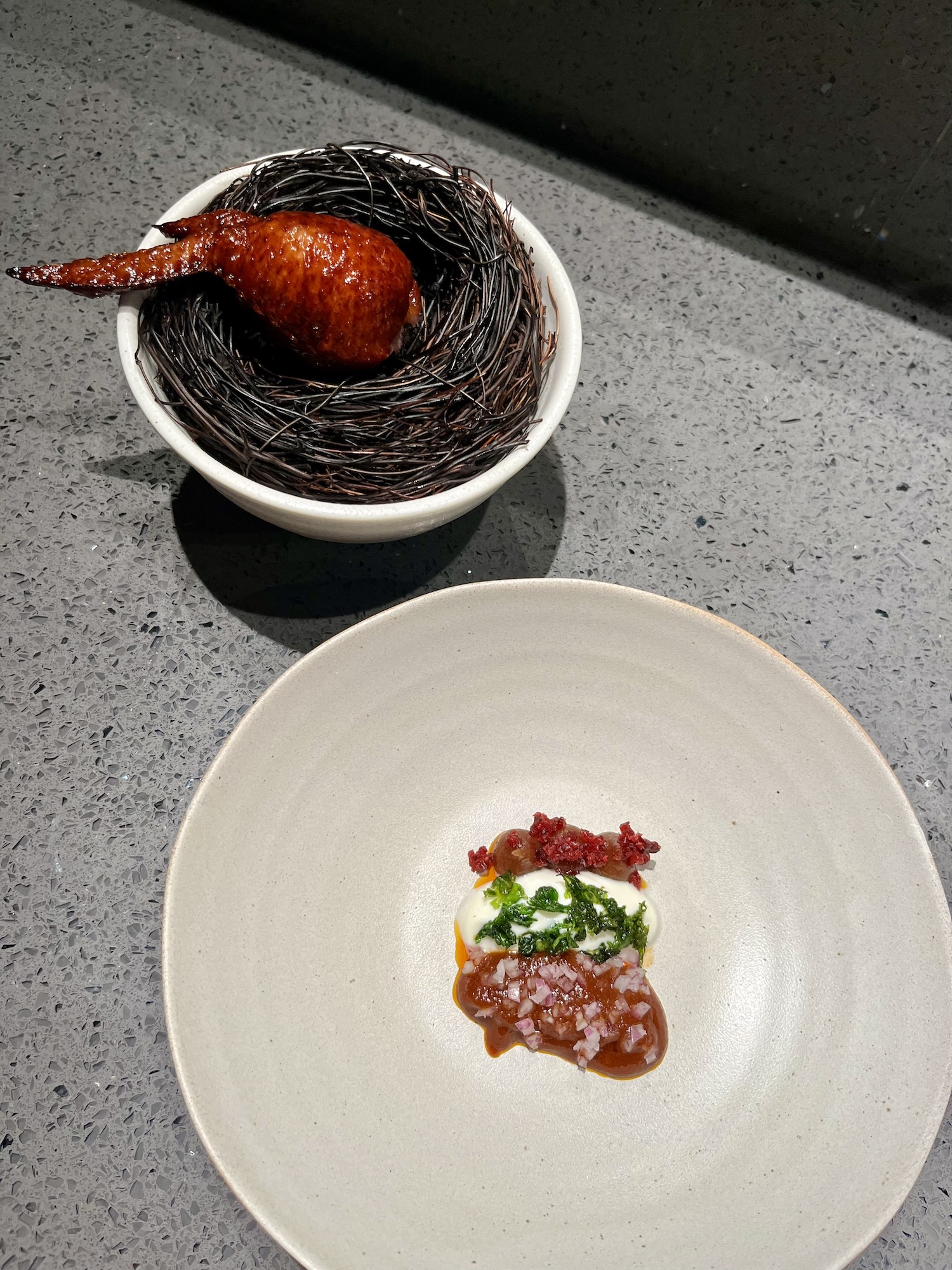
Their housemade Japan-style focaccia served with shoyuzuke egg yolk and ankimo hummus is compelling and so is the next destination, “Myanmar” where Mendez draws inspiration from the noodle dish kaik but instead utilizes kaki taro foam, somen, a spoonful of onion, sugar beet fruit disk, and Nomad caviar. Dip the noodles into the bowl like you would a tsukemen and you get that glowing depth of flavors. Finally, take a hefty bite of the oyster taro puff with Szechuan peppercorns (“I’m part of this dish,” food and travel columnist Pepper Teehankee jokingly tells us).
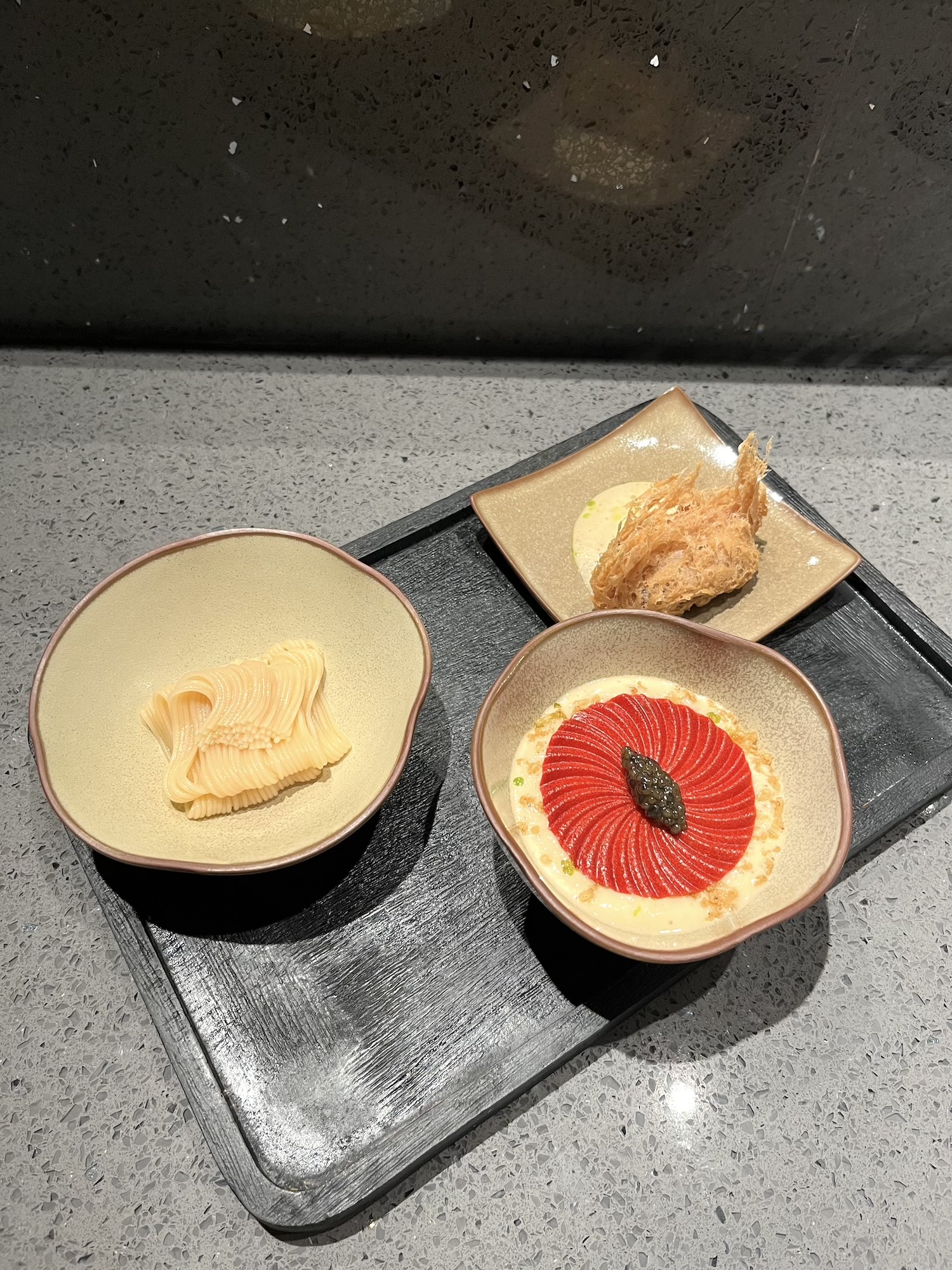
The last two courses, “Korea” and “Japan,” are defined by contrasts. It’s like the best depictions of heaven and earth with a bit of tactical decisions to spice things up. “There’s less smoke coming out of the nabe pot because we flipped the nurungji (crispy rice) instead of it being underneath, we placed it on top,” says Yato.
The last two courses, “Korea” and “Japan,” are defined by contrasts. It’s like the best depictions of heaven and earth with a bit of tactical decisions to spice things up.
But that’s not the first thing you notice. This Korean course is a heavy-duty vessel, a pot of wagyu steak rice that pushes the menu into family meal territory. By design, this is a pot that extends beyond your time at Mōdan as I rightfully did, having wrapped it up to enjoy the next day. Quantity aside, it’s a steak rice that’s wicked where it needs to be and full of intense flavors—from the soy-marinated relish, cassava tteokbokki, and sweet short ribs doused with their own jjamjjamyeon sauce. But the banchan of apple tsukemono (preserved vegetables), yuba kimchi, and curry potato salad break down the vigorous flavors.
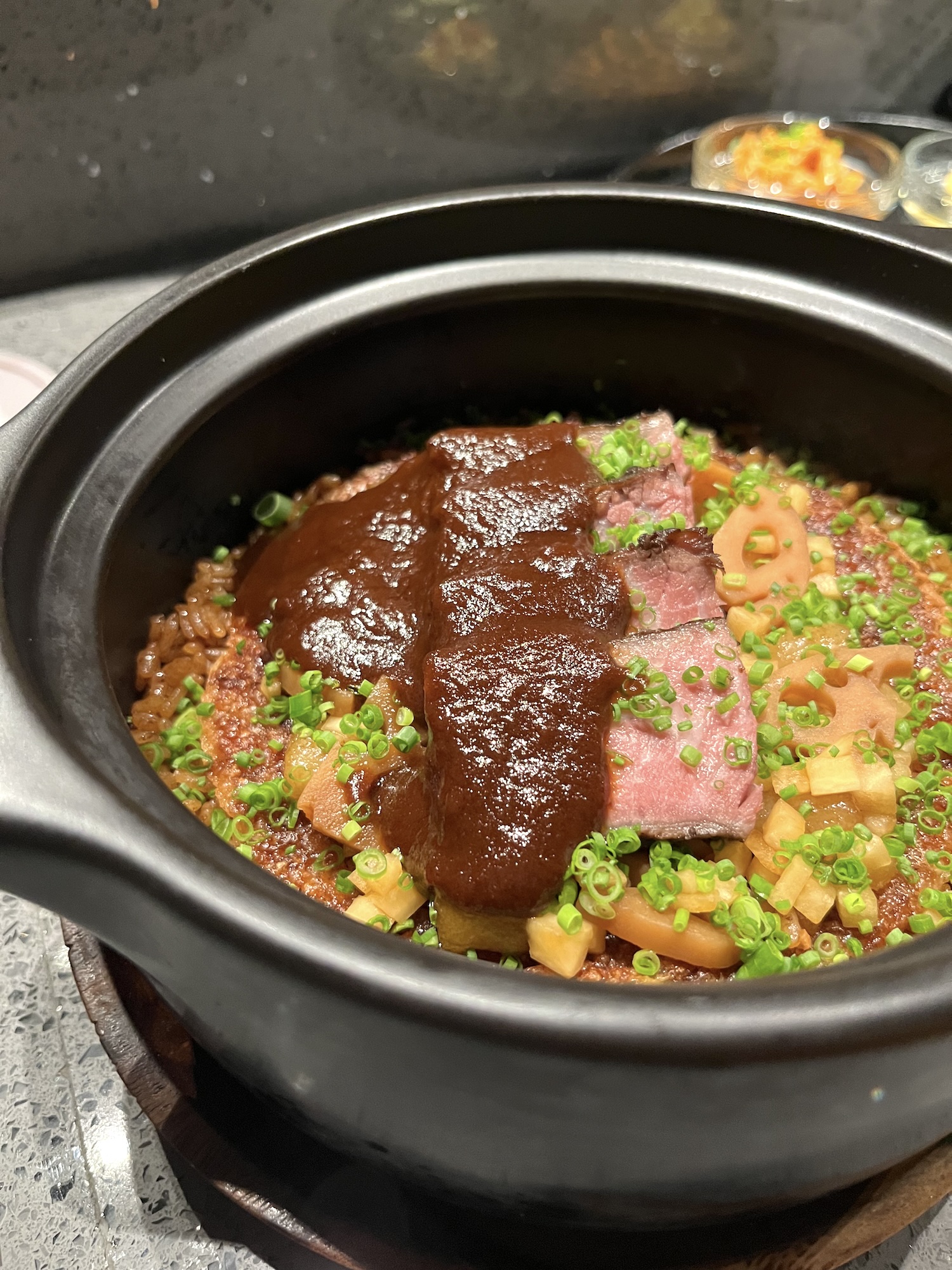
Where the wagyu steak rice is deep and earthy, the genmaicha kakigori dessert is celestial in its subtlety. Delicate ice shavings (flavored with genmaicha syrup) hide the bright genmaicha jelly, muscat grapes, and chia seeds underneath. Kiss a teaspoonful of the kakigori and it melts on your lips like snowflakes. Its accompanying ricotta ice cream matcha mochi is a cute finish to the adventure as you rupture the little ball inside your mouth.
Overall, touching down at Mōdan is always a good idea. With Mendez’s rousing takes on Japanese and Asian cuisine, it really is easy to feel the pulse of regional cuisine without leaving Manila. Get your fill while you can (as his menu lasts only a few months) and drop in on the equally zippy restroom, too.

